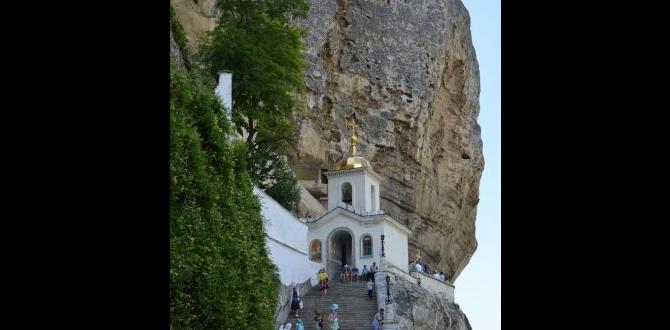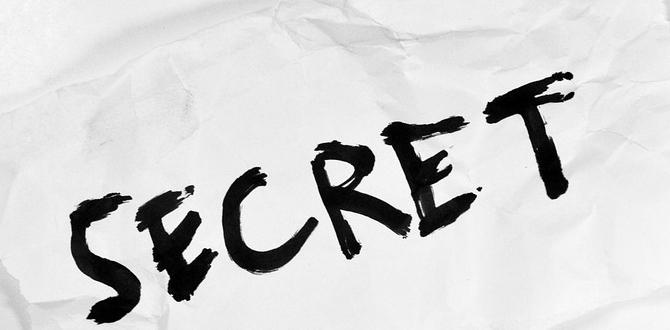Discover Algeria’s hidden gems: Essential walkable routes and maps for a stress-free adventure! Our guide simplifies planning, offering practical tips for exploring Algeria on foot, ensuring comfort and excitement every step of the way.
Algeria, a land of ancient history and breathtaking landscapes, offers incredible opportunities for exploration. Sometimes, the best way to truly connect with a place is by walking its paths. However, finding reliable information on walkable routes and maps can feel like searching for a needle in a haystack.
Many travelers worry about getting lost, safety, or simply not knowing where to start. This guide is here to calm those worries and empower you. We’ll walk you through everything you need to know to confidently plan your walkable adventures in Algeria, from understanding the terrain to finding essential mapping tools. Get ready to discover the magic of Algeria, one step at a time!
Planning Your Algerian Walking Adventure
Before you lace up your boots, a bit of planning goes a long way. Understanding Algeria’s diverse geography and culture will help you choose the right routes and prepare adequately. This section will cover the fundamental steps to ensure your walking journeys are safe, enjoyable, and memorable.
Understanding Algeria’s Diverse Terrain
Algeria is a vast country with incredibly varied landscapes. Knowing what to expect will help you choose appropriate routes and pack accordingly.
Coastal Regions: Along the Mediterranean coast, you’ll find charming towns, historical ruins, and beautiful beaches. Routes here might involve city strolls through historic medinas or seaside paths. The climate is generally mild, but can be humid.
Atlas Mountains: The Tell Atlas and Saharan Atlas ranges offer striking mountainous terrain. Hiking here can range from moderate day trips to challenging expeditions. Expect cooler temperatures, especially at higher altitudes, and potential for snow in winter. Trails can be rugged.
Sahara Desert: Algeria holds a significant portion of the Sahara Desert, a place of stark beauty and unique challenges. Desert walks, known as treks, require significant preparation, local guidance, and specialized gear due to extreme heat, sand, and vast distances.
Plateaus and Steppes: Inland areas feature high plateaus and steppe landscapes. Routes here might be more remote, offering a sense of solitude and a chance to see unique flora and fauna.
Essential Gear for Walkable Routes
Comfort and safety are paramount when exploring on foot. Here’s a look at essential gear:
Footwear: Sturdy, broken-in walking shoes or hiking boots are crucial. For city walks, comfortable sneakers are often sufficient.
Clothing: Layering is key. Pack breathable fabrics, a waterproof and windproof jacket, and sun protection (hat, sunglasses). Evenings can get cool, so a light sweater or fleece is wise.
Navigation: A reliable map (physical and digital), compass, and a GPS device or smartphone with offline maps are indispensable.
Hydration: Carry plenty of water. Electrolyte tablets can also be beneficial, especially in warmer climates. A reusable water bottle or hydration pack is recommended.
Sun Protection: High SPF sunscreen, lip balm with SPF, and a wide-brimmed hat are essential for protecting your skin from the strong Algerian sun.
First-Aid Kit: A basic kit with bandages, antiseptic wipes, pain relievers, and any personal medications is a must.
Snacks: Energy bars, nuts, and dried fruit can provide much-needed fuel during your walks.
Backpack: A comfortable daypack to carry your essentials.
Safety Considerations for Walkers in Algeria
Your safety is our top priority. Here are some points to keep in mind:
Inform Someone: Always let your accommodation host or a trusted local know your intended route and expected return time.
Stay on Trails: Especially in mountainous or desert areas, stick to marked paths to avoid getting lost or encountering unexpected hazards.
Respect Local Culture: Dress modestly, particularly when walking through towns and villages. Learn a few basic Arabic or Tamazight phrases – a friendly “Salam alaikum” goes a long way.
Water and Food Safety: Drink bottled or purified water. Be cautious with street food if you have a sensitive stomach.
Heatstroke and Dehydration: In hot weather, walk during cooler parts of the day (early morning or late afternoon) and drink more fluids than you think you need.
Solo Travel: While many areas are safe, exercising extra caution when traveling solo is always advisable. Consider joining guided tours for more remote excursions.
Popular Algerian Walkable Routes & Regions
Algeria boasts a wealth of destinations perfect for exploring on foot. Here, we highlight some of the most accessible and rewarding areas for walkers, from bustling cities to serene natural wonders.
Exploring Historic Cities on Foot
Many of Algeria’s cities are best experienced by wandering through their ancient streets and vibrant markets.
Algiers (El Djazair): The capital city offers a fascinating mix of Ottoman and French colonial architecture.
Casbah of Algiers: A UNESCO World Heritage site, this labyrinthine old city is a must-walk. Prepare for narrow, winding alleys, hidden squares, and a true immersion into the past. Download offline maps or hire a local guide for the best experience.
Notre Dame d’Afrique: A beautiful basilica perched on a hill, offering panoramic views of the bay. The walk up is rewarding.
Botanical Garden (Jardin d’Essai du Hamma): A peaceful green oasis perfect for a leisurely stroll.
Constantine: Known as the “City of Bridges,” Constantine is dramatically built across a deep gorge.
Walking the Bridges: Crossing its iconic suspension bridges offers breathtaking views of the Rhumel River. The Sidi M’Cid bridge and the Sidi Rached bridge are notable.
Old Town: Explore the narrow streets and visit historical sites like the Emir Abdelkader Mosque.
Oran: A vibrant coastal city with a rich history.
The Medina: While smaller than Algiers’, Oran’s old town has charming areas to explore.
Fort de Santa Cruz: A historic fortress offering fantastic sea views. The climb up provides a good workout and a rewarding vista.
Natural Wonders for Hikers
Beyond the cities, Algeria’s natural beauty calls to those who love to explore the great outdoors.
Tassili n’Ajjer National Park: Located in the Sahara, this is a destination for true adventurers. Famous for its prehistoric rock art and stunning desert landscapes of sandstone rock formations.
Note: Due to the extreme conditions and remoteness, guided tours with experienced local operators are essential here. Walks are typically multi-day treks.
External Resource: For an understanding of the importance of this region, explore the UNESCO World Heritage Centre page for Tassili n’Ajjer.
Djurdjura National Park: Part of the Tell Atlas mountains, this park offers alpine-like scenery, forests, and the famous cedar trees.
Routes: Trails vary in difficulty, from gentle woodland walks to more strenuous mountain hikes. A popular destination for locals seeking cooler air.
Gorges de Ghoufi: Located in the Aurès Mountains, these dramatic canyons offer spectacular scenery for hiking. The views are stunning, and there are opportunities to visit traditional Berber villages.
Coastal Walks and Beaches
Algeria’s coastline is long and varied, offering beautiful spots for seaside strolls.
Tipaza: An ancient Roman city ruins right by the sea, perfect for a historical and scenic walk along the water.
El Kala National Park: Located in the northeast, this park encompasses coastal lagoons, forests, and beaches, offering diverse walking opportunities.
Essential Tools and Maps for Algerian Exploration
Navigating unfamiliar territory requires reliable tools. Here’s a breakdown of the maps and digital resources that will be your best companions.
Physical Maps: The Timeless Navigator
While digital tools are powerful, a good old-fashioned paper map offers reliability, especially in areas with limited connectivity.
Best For: Gaining a broad overview of regions, plotting longer routes, and as a backup to digital devices.
Where to Find: Look for maps from reputable publishers specializing in travel or topographic maps in larger bookstores in Algeria, or consider purchasing before your trip.
Key Features to Look For:
Topographic Detail: Shows elevation changes, which is crucial for assessing trail difficulty.
Clear Legend: Explains symbols for trails, points of interest, and terrain.
Scale: Helps you understand distances.
Digital Mapping Apps: Your Pocket Navigator
Smartphone applications have revolutionized how we explore. Investing a little time in setting these up can make your trips much smoother.
Google Maps:
Pros: Widely recognized, loads of points of interest, satellite view, street view in many urban areas. Enables downloading maps for offline use.
Cons: Terrain detail can be limited in remote areas.
How to Use Offline: Before you go, search for “Algeria” or the specific region you’ll be visiting, tap on the place name or menu, and select “Download offline map.”
Maps.me:
Pros: Excellent for offline use, crowdsourced data often includes hiking trails and points of interest not found on other maps.
Cons: User interface might be less intuitive than Google Maps for some.
How to Use Offline: Download the Algeria map pack within the app.
AllTrails / Komoot (if coverage available):
Pros: Specifically designed for hikers and cyclists, often featuring user-generated trail reviews, difficulty ratings, and detailed trail maps.
Cons: Coverage in Algeria might be limited or rely heavily on user contributions. Check app data before relying solely on it.
GPS Devices: For Serious Adventurers
For those venturing into very remote areas like the Sahara or undertaking multi-day treks in the mountains, a dedicated GPS device offers superior accuracy and battery life.
Pros: Highly durable, excellent battery life, precise location tracking, ability to load various map types.
Cons: Higher cost, steeper learning curve compared to smartphone apps.
Recommendation: If you’re planning extensive exploration off-the-beaten-path, consider renting or purchasing a handheld GPS unit.
Embarking on Your Walks: Step-by-Step Guide
Ready to hit the ground walking? This section provides a practical, step-by-step approach to making your exploration smooth and enjoyable.
Step 1: Choose Your Route and Destination
Research: Based on your fitness level, interests (history, nature, culture), and available time, select a region or city.
Difficulty Assessment: Check topographical maps or app reviews to understand the terrain, elevation changes, and trail conditions.
Local Advice: If possible, talk to your hotel or tour operator for recommendations on current trail conditions and popular local routes.
Step 2: Prepare Your Maps and Navigation
Offline Downloads: Download maps for your chosen region on your preferred mapping app (Google Maps, Maps.me) before you leave Wi-Fi.
Physical Backup: Carry a printed map of the area, especially for longer or more remote walks.
Route Plotting: Familiarize yourself with the general route. Mark any key landmarks or points of interest. Ensure your GPS device is loaded with the relevant maps.
Step 3: Pack Your Essentials
Refer to the “Essential Gear for Walkable Routes” section and pack your daypack. Double-check that you have water, snacks, extra layers, sun protection, and a basic first-aid kit. Make sure your phone is fully charged or bring a portable power bank.
Step 4: Inform Someone of Your Plans
Share Your Route: Tell your hotel, a friend, or a family member where you are going, your planned route, and your expected return time.
Check-in: If you have mobile reception, send a quick message when you start and when you finish your walk.
Step 5: Begin Your Walk Safely
Start Early: Especially in warmer months, begin your walk in the cooler parts of the day.
Stay Aware: Pay attention to your surroundings, trail markers, and the weather.
Pace Yourself: Enjoy the journey, don’t rush. Take breaks as needed.
Hydrate and Snack: Drink water regularly and eat snacks to maintain energy levels.
Step 6: Navigating During Your Walk
Follow Markers: Adhere to any trail markers or signposts.
Consult Your Map: Periodically check your position on your physical map and digital app. For digital apps, ensure your GPS is enabled.
Recognize Landmarks: Use prominent natural or man-made features to orient yourself.
Re-evaluate if Lost: If you become unsure of your location, stay calm. Stop, consult your map and GPS, and try to retrace your steps to a known point. If you cannot reorient, consider calling for assistance if you have signal or staying put until help arrives.
Step 7: Completing Your Walk
Post-Walk Check: Ensure you have accounted for all your belongings.
Update Your Contact: Let the person you informed know that you have safely completed your walk.
Reflect: Take a moment to appreciate the experience and discoveries you made on your Algerian adventure!
Comparing Travel Styles: Walking Tours vs. Independent Exploration
Choosing how you explore Algeria on foot can significantly impact your experience. Here’s a comparison to help you decide what’s best for you.
| Feature | Guided Walking Tour | Independent Exploration |
| :—————– | :——————————————————————————- | :————————————————————————————— |
| Planning Effort| Minimal. Tour operator handles logistics, routes, and guides. | High. Requires personal research, route planning, navigation, and accommodation booking. |
| Knowledge | Deep local insights, history, and cultural explanations from the guide. | Can be learned through research, but may lack spontaneity and in-depth local context. |
| Navigation | Included. Guide leads the way, minimizing the risk of getting lost. | Relies on your own mapping skills, apps, and devices. |
| Flexibility | Limited. Follows a set itinerary and pace. | High. Complete freedom to alter routes, spend more time at sights, and explore off-path. |
| Cost | Generally higher upfront, includes guide fees, organized transport, and sometimes meals. | Can be more budget-friendly, but requires careful planning to manage expenses. |
| Safety | Enhanced, especially in remote or complex areas, with an experienced guide. | Relies on your preparedness, awareness, and adherence to safety guidelines. |
| Social Aspect | Opportunity to meet fellow travelers and share experiences. | More solitary, or based on your own travel companions. |
| Ideal For | Beginners, those seeking in-depth cultural/historical understanding, remote areas. | Adventurous travelers, those on a budget, those who value autonomy. |
Both methods offer fantastic ways to experience Algeria on foot. For many, a mixed approach works well – perhaps a guided tour for a challenging region like Tassili n’Ajjer, and independent exploration for city walks.
Frequently Asked Questions
Q1: Is it safe to walk around cities in Algeria?
Yes, it is generally safe to walk around Algerian cities, especially during daylight hours. Like any urban environment, it’s wise to be aware of your surroundings, keep valuables out of sight, and stick to well-lit areas at night. Algiers, Constantine, and Oran are popular for city exploration. Dressing modestly is also recommended to respect local customs.
Q2: Do I need a guide to walk in remote areas like the Sahara or mountains?
For remote areas such as the Sahara Desert or challenging mountain treks in the Aurès or Djurdjura mountains, hiring a local guide is highly recommended, and often essential for safety. These regions present significant challenges like extreme weather, vast distances, and difficult terrain. A guide ensures you have local knowledge, appropriate equipment, and are aware of potential hazards.
Q3: Can I rely solely on my smartphone for navigation in Algeria?
While smartphone apps like Google Maps and Maps.me are excellent tools, it’s best not to rely on them exclusively. Ensure you download offline maps for the regions you’ll be visiting before* you lose internet access. Battery life can also be an issue, so carrying a portable power bank is a good idea. For any serious trekking, a physical map and compass, or a dedicated GPS device, are highly recommended as backups.
Q4: What is the best time of year for walking in Algeria?
The best time for walking in Algeria depends on the region. For coastal areas and cities, spring (March-May) and autumn (September-November) offer pleasant temperatures. The mountains are ideal for walking in spring and summer, though higher elevations can still be cold. The Sahara is best explored during the cooler winter months (November-February), avoiding the extreme heat of summer.
Q5: What are common types of walking routes I can expect?
You can expect a variety of walking routes. In cities, these are typically strolls through historic medinas, along corniches (coastal roads), or through parks. In natural areas, you’ll find marked hiking trails in national parks, rugged mountain paths, and, for the adventurous, multi-day desert treks. Many ancient Roman ruins also offer accessible pathways for exploration.





